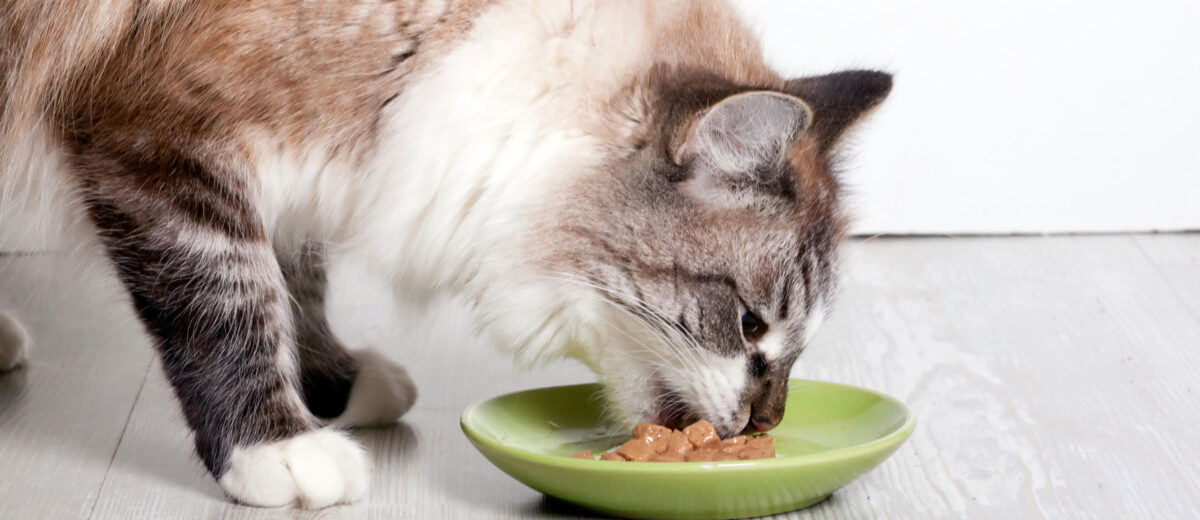
What’s for dinner?
Wet vs dry food? Set meal times or free-feeding?
Knowing what and when to feed your cat or kitten can be very confusing.
Set Meal Times
The amount and frequency of meals depends on your cat’s age, health and preference.
Feeding your cat at set times during the day (two or three meals) allows you to provide food on a schedule, but food is not freely available between meals. This allows you to monitor how much food is eaten at each meal. Free feeding means food is available at all times. This works best with dry food, and allows the cat to eat multiple small meals per day, on their own schedule. Combination feeding allows you to feed both. Wet food often fed twice a day and dry food is freely available. However, this can often lead to overeating and obesity.
Dry Food
Dry food is by far more convenient than wet food. It’s easier to store. It’s less messy, lasts longer and is cheaper, but it has very little water content. Many cat nutrition experts warn against feeding cats a strictly dry kibble diet. Dry kibble diets average around 7-12% moisture content, making your pet prone to dehydration if they don’t drink a significant amount of water. Kibble is also very calorie dense. While dry food is good for your cat’s dental heath, feeding a dry food diet only can lead to obesity.
Wet Food
Many cats find wet food more palatable and the variety of wet food is impressive. Pate, chunky, with or without gravy – the options are endless! Add a little warm water to wet food to bring out the aroma of the food, and it’s even more appealing. Since canned cat food naturally contains more moisture than dry food, your cat is less likely to suffer from dehydration. Feeding your cat wet food as a part of your cat’s daily routine is the best thing you can do for your cat’s kidney health. Wet food has more moisture and protein and less carbs – the perfect combination to help with weight loss.
In this short Jackson Galaxy clip, he outlines his ‘must do’ rules for feeding cats.
Kitten Food
Kittens require more food per pound of body weight to support their growth than do adult cats.
Kittens have different nutritional needs than adult cats. They need more protein, fat and calories, so always be mindful when choosing kitten food that it is specially formulated for kittens. Wet food is preferred for kittens as it contains the essential moisture needed to keep your growing kittens happy & healthy. Kittens should also be given free access to food during their first six months, and should be fed at least three times a day. After four months, feeding can be decreased to twice a day. At 12 months, kittens can move to adult food and an adult feed schedule.
Do Not Forget Water!
Always provide fresh water!
Cats need fresh drinking water every day for optimum health. Water is essential for helping the kidneys flush out toxins from the blood. Water also helps keep other organ tissues hydrated and healthy. Dehydration in cats is dangerous, and if not treated, can lead to death.
Serve Quality Food
Ultimately, whether choosing wet cat food vs. dry cat food, you should always choose a premium cat food with quality ingredients. Dry food is generally less expensive that wet food, but remember – you get what you pay for! The higher initial cost will be offset long-term by reduced veterinary costs.
The above is information only. Always discuss the subject with your veterinarian! They will make their suggestion based on professional experience and direct knowledge of your cat(s).